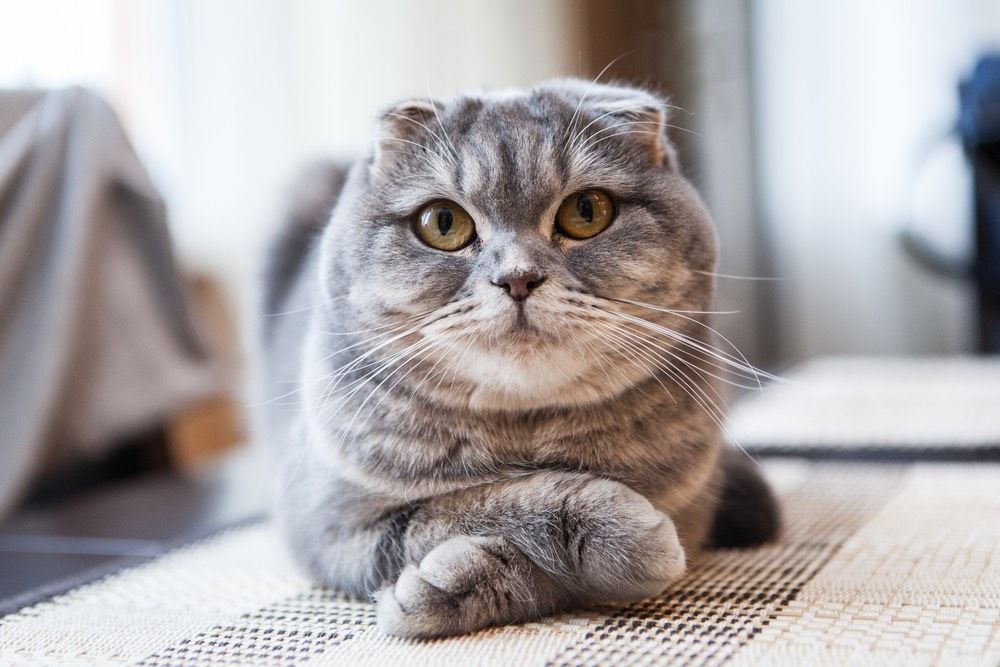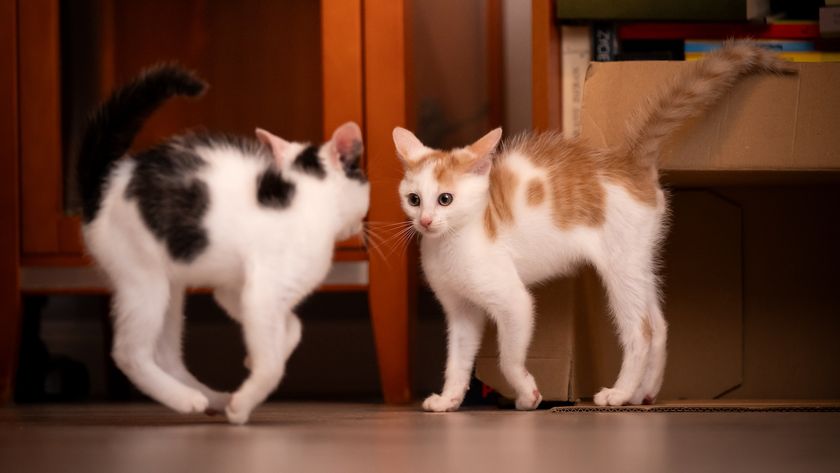
Why the Breeding of Mutant Cats Should Be Banned (Op-Ed)

This article was originally published at The Conversation. The publication contributed the article to Live Science's Expert Voices: Op-Ed & Insights.
Cats are one of the world’s favorite pets, but in our efforts to breed more attractive felines, we are metaphorically loving them to death.
Like British Bulldogs and extreme styles of pigeons, some cats bred to please a human sense of beauty suffer from serious health problems. This is the case for a particularly lovely cat, the Scottish Fold.
It has long been known that breeding Scottish Folds risks health problems, but research is mounting that it is impossible to mitigate this risk. It is time to ban the breeding of this type of cat, as other nations have done.
Why so cute?
The Scottish Fold is a rare feline breed. It originated when a naturally occuring mutant cat was born in Scotland during the last century, at a farm near Coupar Angus in Perthshire. The cat had forward-folding ears because her ear cartilage wasn’t rigid enough to support her ears.
Her name was Susie and she looked cute. Cute enough that, in a great UK tradition, they wanted to preserve the mutation by breeding her with British short-haired cats and local farm cats. And so the Scottish Fold was born.
Why do people like cats with floppy ears? Many authorities think this is because of the Lorenzian theory of beauty, named in honor of Konrad Lorenz who was awarded the Nobel Prize for his work on ethology, the study of animal behavior.
Sign up for the Live Science daily newsletter now
Get the world’s most fascinating discoveries delivered straight to your inbox.
Most people, especially children, find a round face resembling that of a human comforting, whereas the longer snout and erect ears (of, say, a wolf) is potentially frightening. For this reason, many people find the appearance of owls pleasing to the eye, which is why they have owl cafes in Tokyo, and why so many people collect owl figurines.
So a Scottish Fold looks owl-like, and for many people this is a highly desirable trait.
Tracing the mutation
It didn’t take long for veterinarians and scientists to figure out that if the cartilage in the ear was defective, then cartilage in the joints might also be dodgy. The British geneticist Oliphant Jackson demonstrated this unequivocally in a most elegant series of classic genetic and radiological experiments in a hospital basement in the 1970s.
Cats, like people, have two copies of most genes. Jackson showed that cats like Susie (and her daughter Snooks), which both had a single copy of the postulated defective gene, were reasonably normal.
In contrast, cats with two copies of the dud gene developed crippling arthritis from an early age. Sensibly, Jackson suggested the breeding of such cats be banned, and that’s what happened in the UK and France.
But some Scottish Folds were exported to the US. Unfortunately, in that jurisdiction breeding was allowed, with the proviso that a Scottish Fold only be mated to a Scottish Shorthair (a normal cat with a similar genetic background, but with normal ears and hence normal cartilage). This type of mating resulted in half of each litter of kittens (on average) having folded ears, the other half being Scottish Shorthairs. And so the breed went on.
In the early 1990s a group of Australian veterinarians demonstrated convincingly that all Scottish Fold cats have abnormal bone development of their distal limbs. This is generally associated with early onset and accelerated progression of osteoarthritis (degenerative joint disease) in joints of the distal limbs and tail. The ankle and wrist were the joints most obviously affected, especially the ankles.
In time all Folds develop adverse changes. This work was confirmed and extended subsequently by Japanese and Korean investigators. Yet Scottish Folds are still bred in the US, Asia and even Australia.
Two years ago a collaboration between Australian, European and American researchers uncovered the science behind the problem. Their research was recently published in the journal Osteoarthritis and Cartilage.
The problem lies in a gene that affects cells involved with pressure and pain sensing within cartilage. Children with a very similar genetic defect have comparable bone deformities to affected Scottish Fold cats.
What does this mean for the cats?
Scottish Shorthairs have normal ears and are completely healthy. They are lovely, sweet-natured cats.
Scottish Folds have shortened limbs, an abnormal gait, a peculiar and sometimes stiff or painful tail, and the propensity to develop osteoarthritis at an earlier age. This causes variable lameness (often severe) and secondary deformity.
The truth is, we have known since Jackson’s work in the 1970s that breeding Scottish Fold cats is ethically indefensible.
Yet the practice has continued in most jurisdictions, with cat breeders and veterinarians turning a blind eye to the frequently obvious problems.
While there are still questions to be answered, we already possess sufficient information to know that breeding these cats is cruel. Vets and cat breeders who condone this practice have no scientific basis with which to defend this practice. They are not breeding cats – they are perpetuating a disease state.
What to do
The breeding of Scottish Folds has been effectively banned in Victoria. It should be the same in every state of Australia and every country overseas.
In my opinion, the RPSCA should seek out people who advertise these cats for sale and prosecute them.
We cannot condone breeding cats because it’s in our nature to think they are cute, when pain and suffering will afflict a substantial proportion of these cats for much of their life, with ongoing requirements for medication and sometimes even radiation therapy or surgery.
Scottish Shorthairs have the same sweet personality and behavioral features of Scottish Folds, but they don’t get the joint issues. These could be bred and shown in the place of the Folds. They are lovely cats.
The solution is that simple. It’s time to stop pussyfooting around.
Richard Malik, Veterinary Internist (Specialist), University of Sydney
This article was originally published on The Conversation. Read the original article.












